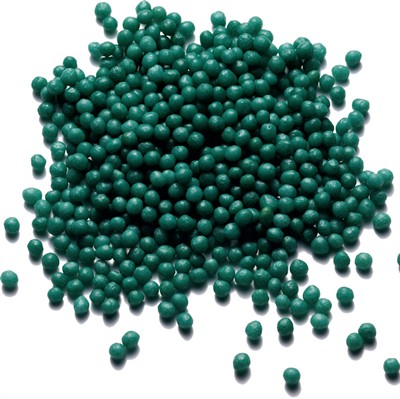We all know that fertilizer is important to having a beautiful green lawn, but why? How does it work? How do I know which type to choose? What time of year should I fertilize in Ottawa? Get all your questions answered with these facts on fertilizer.

What Lawns Need
Just like humans, lawns need nutrients to grow healthy and strong and fertilizer provides lawns with a balanced diet of Nitrogen (N), Phosphorus (P), and Potassium (K). All three of these elements work together to give the lawn exactly what it needs – Nitrogen helps with grass blade and leaf development, lawn density and gives grass it’s dark green colour, phosphorus helps the grass to mature by promoting healthy, vigorous root growth, and potassium helps the grass withstand drought, winter and general wear and tear.
Soil has an easier time holding on to adequate levels of phosphorus and potassium, but nitrogen needs to be applied a couple of times a year. One natural way to increase the nitrogen levels in your lawn is to leave your lawn clippings after you mow.
Testing Your Soil
The best type of fertilizer for Ottawa lawns is best determined by knowing the soils in the area. Not only will it reveal if your soil is deficient in potassium or phosphorus (a soil test can’t determine Nitrogen levels), but it will also determine the acidity of your soil. Most Ontario grasses, such as Kentucky Blue Grass, Ryegrass or Tall Fescue grow best in soil that is neutral to slightly acidic. Fertilizer with sulphur added will help neutralize soil that is too alkaline and lime will help with soil that is too acidic.
If you haven’t tested your soil, a good choice for Ontario lawns is a 4 to 1 to 2 ratio of nitrogen, phosphorus and potassium (in that order). So if you’re in the store, look for a bag of fertilizer with a 20-5-10 content of N-P-K.
When to Apply
The best time of year for fertilizer application is in late fall after the grass has stopped growing but the lawn is still green. Using an inorganic fertilizer this time of year is best because has quick-release nitrogen and it will give you green grass early in the spring, healthy root growth in the fall and spring which promotes a thicker, lush lawn.
How to Apply
Even application of fertilizer is key, especially if you don’t want your lawn to have stripes. If you are using a centrifugal-type spreader, two half-applications is best, at right angles to each other. With a drop applicator, apply is over the length of the lawn, first applying a header strip at the top and bottom of the lawn so you have room to turn around, making sure that you turn the spreader off when doing so, to avoid a double application. To help ensure you’re covering the whole area, make sure you overlap each row.
Don’t forget to water your lawn after you have fertilized you don’t want the fertilizer to just sit on the grass, but rather absorb into the soil. Leaving the fertilizer too long without watering can cause your grass to burn.
If your interested in our Fiesta Weed Control services please click HERE or click on the link below to request a FREE quote.





